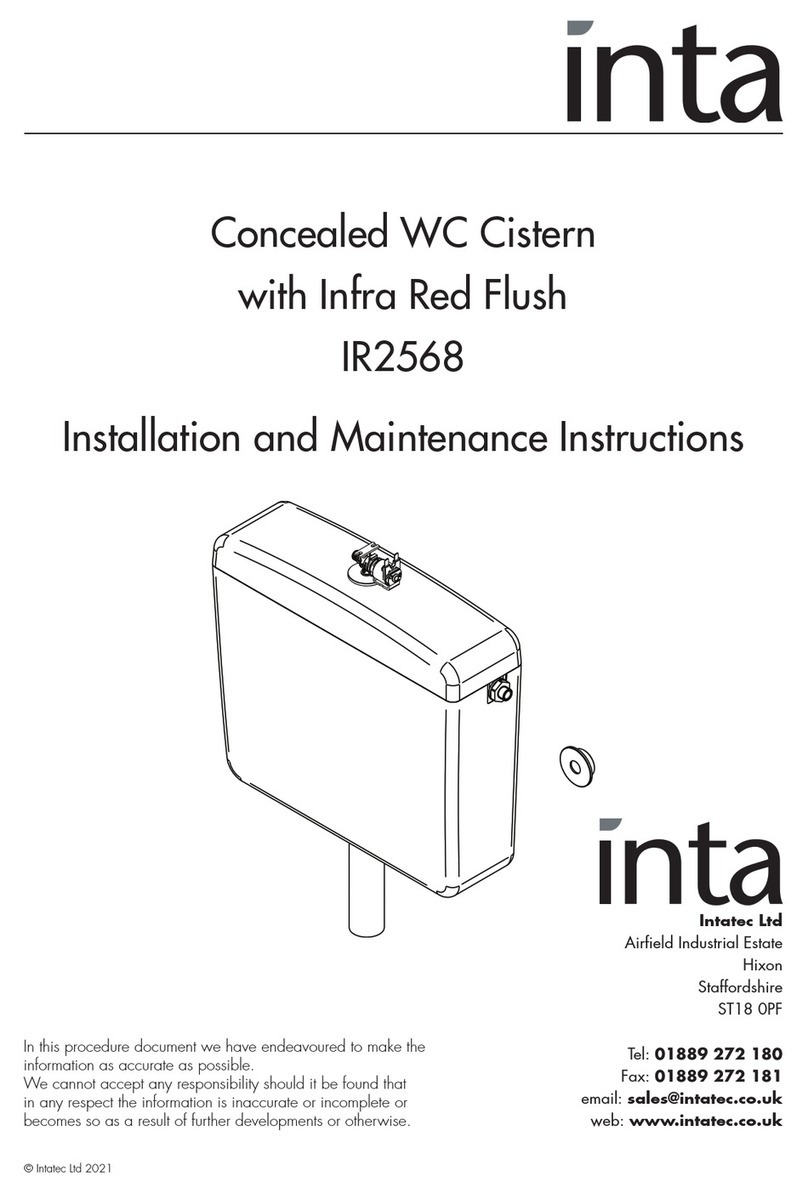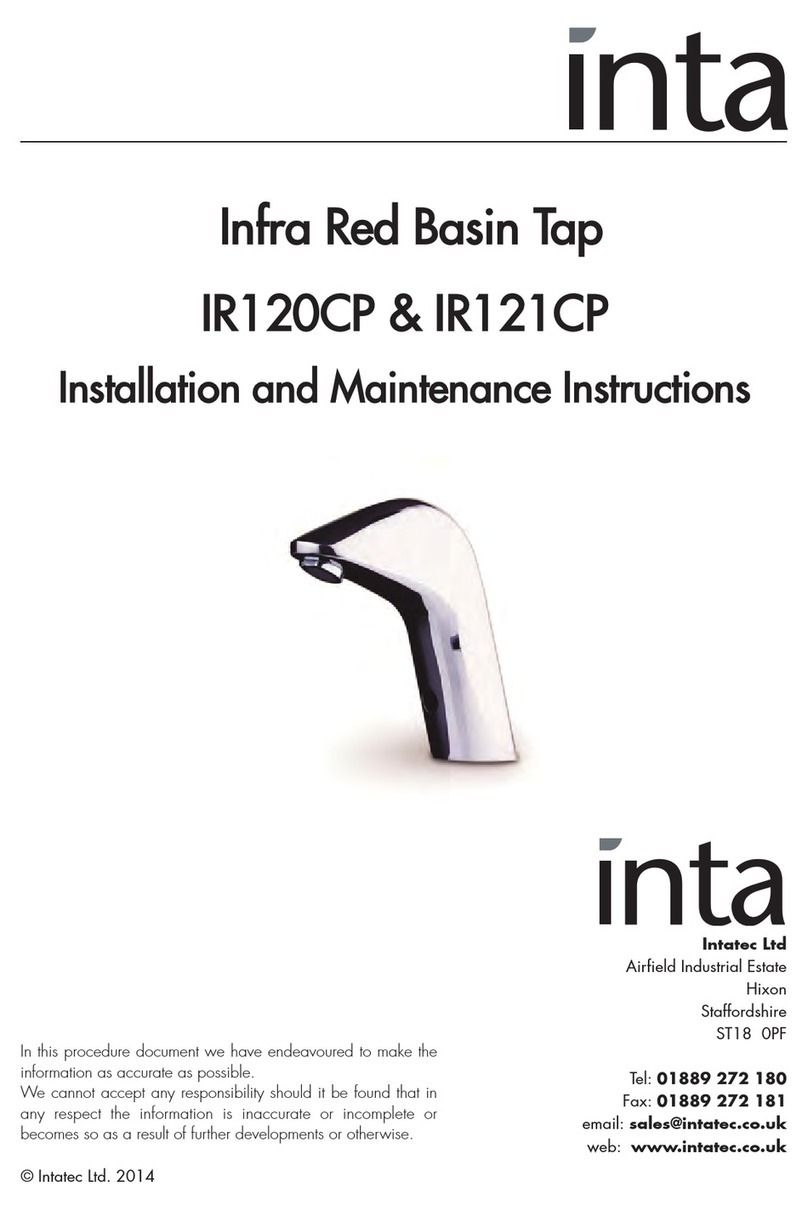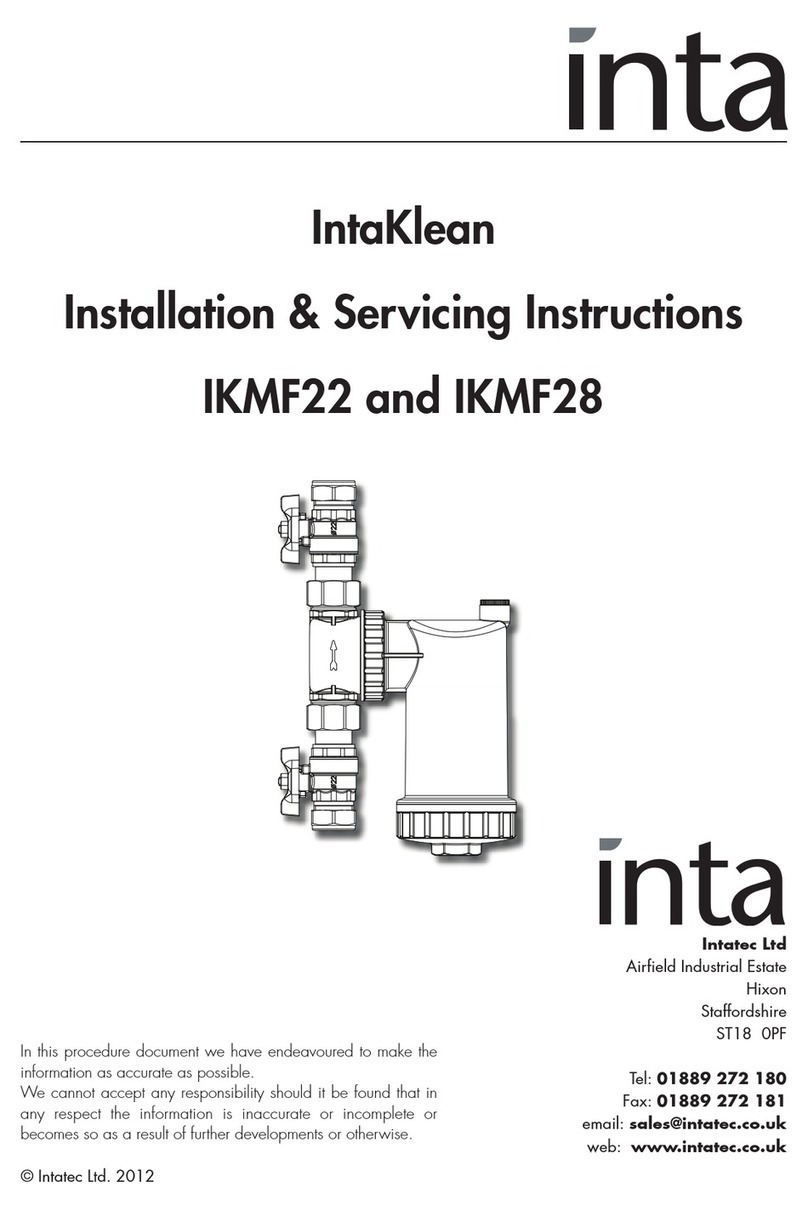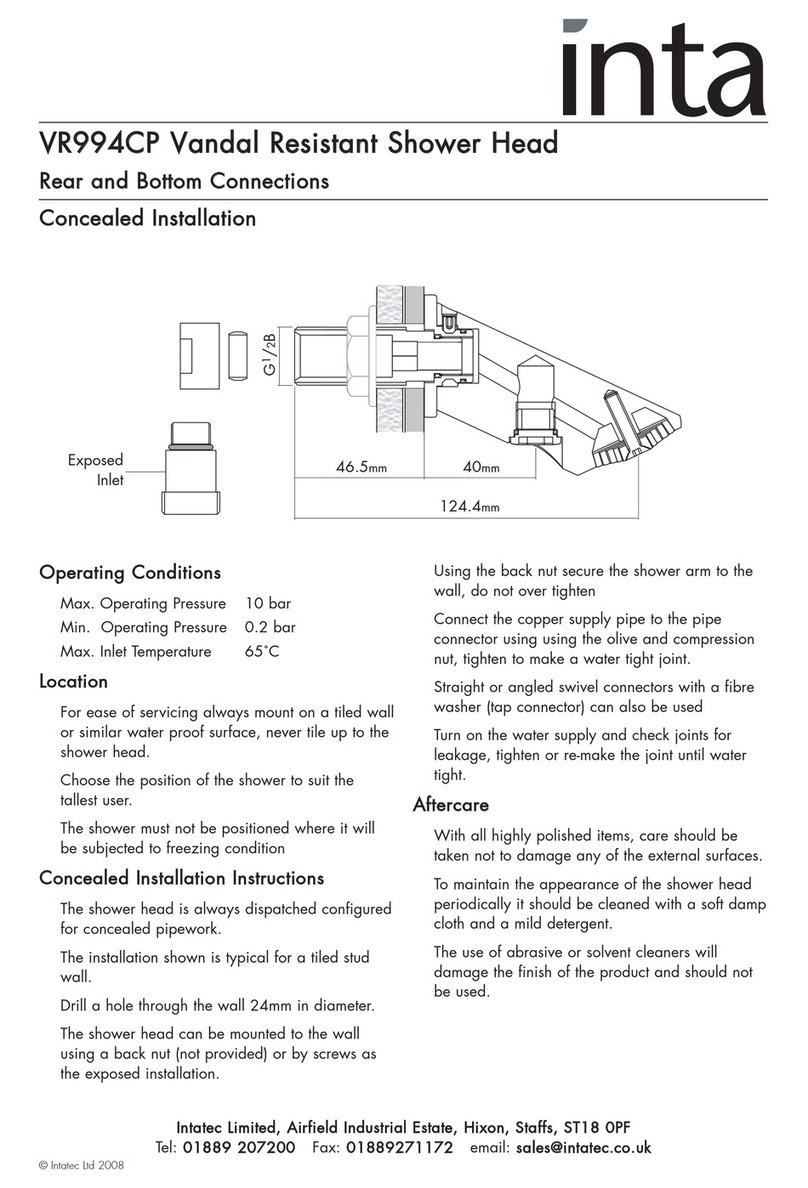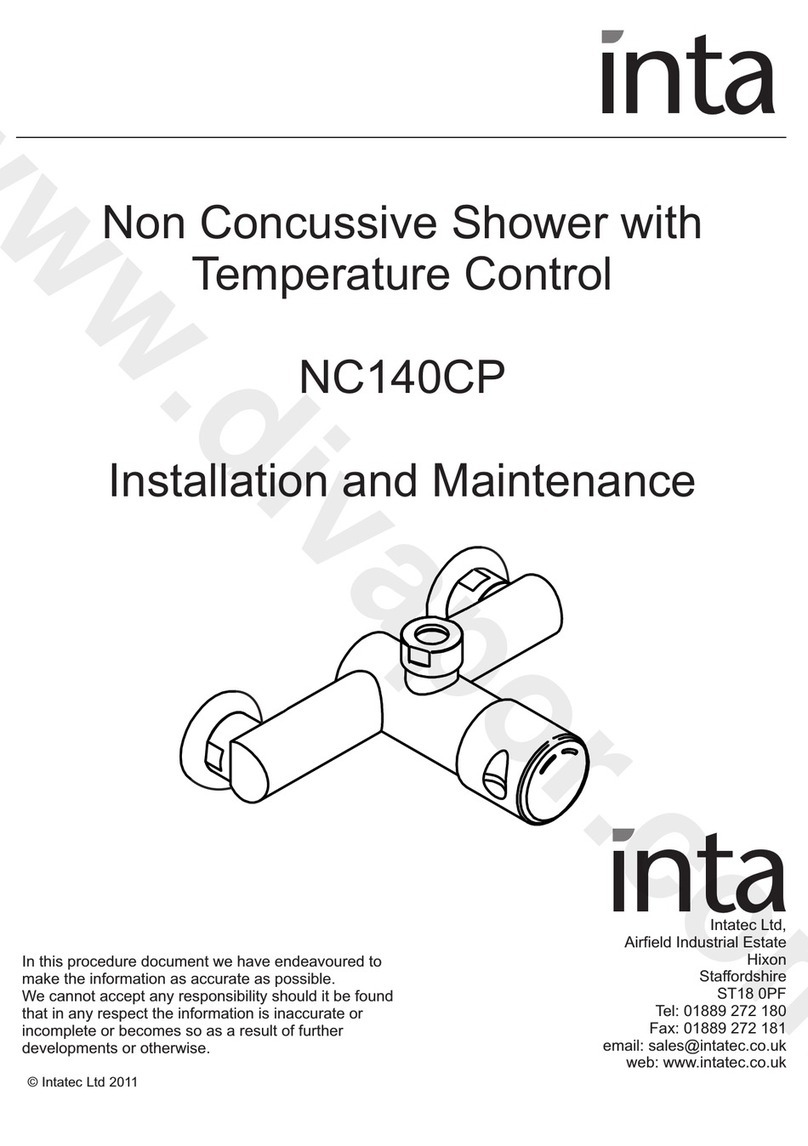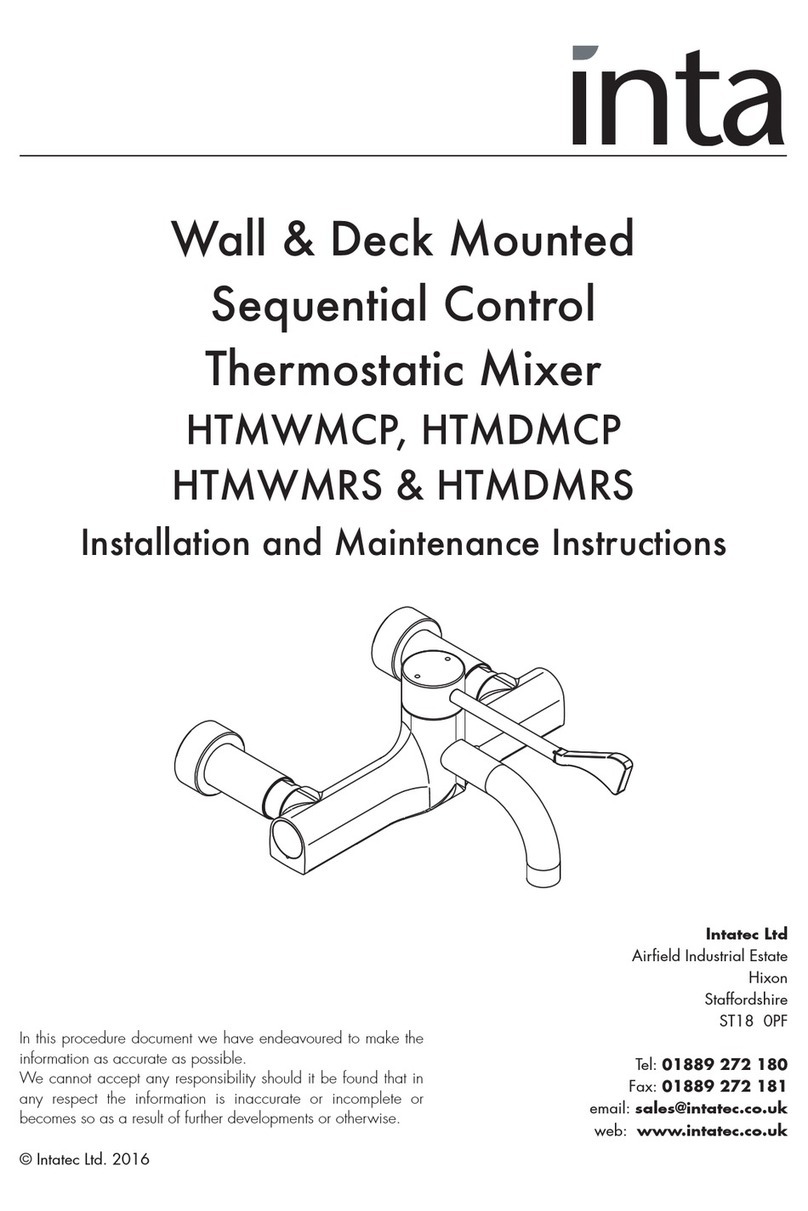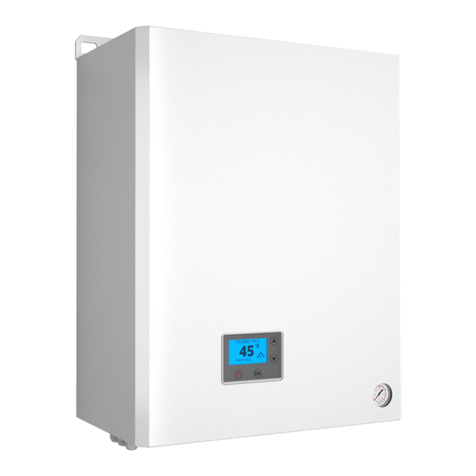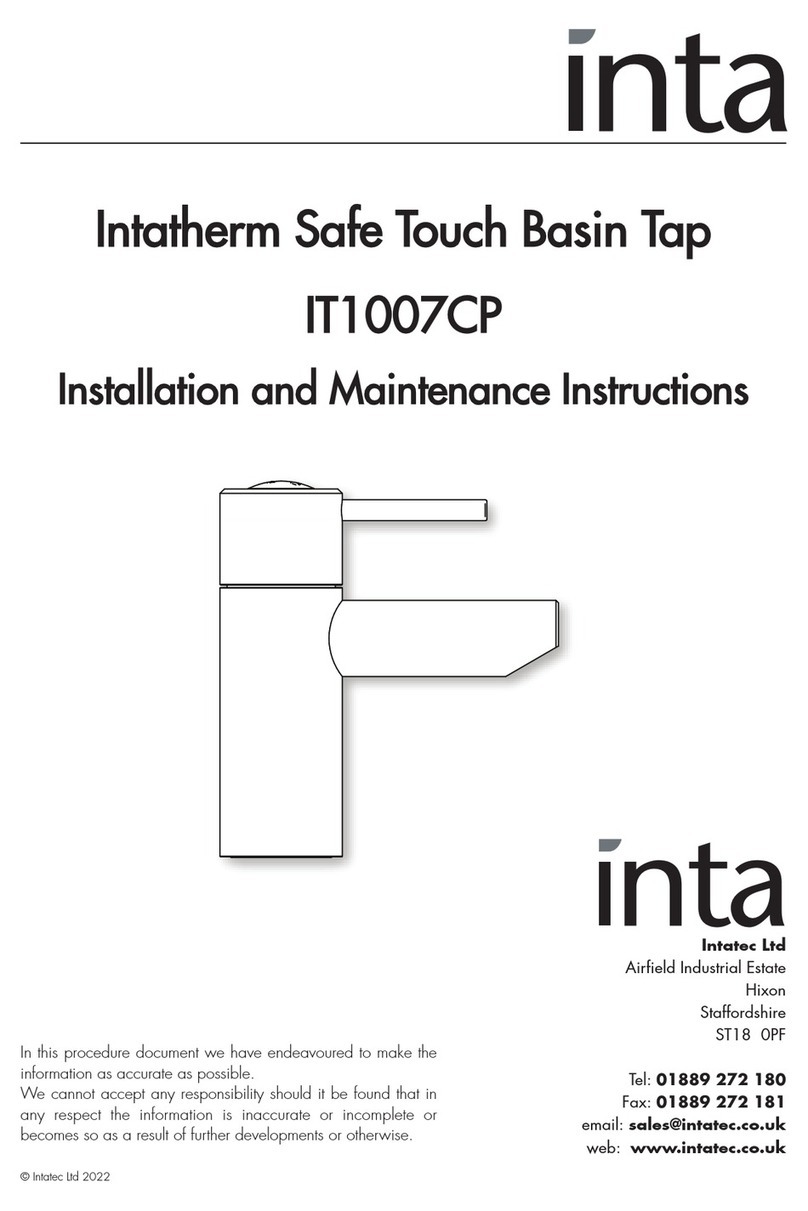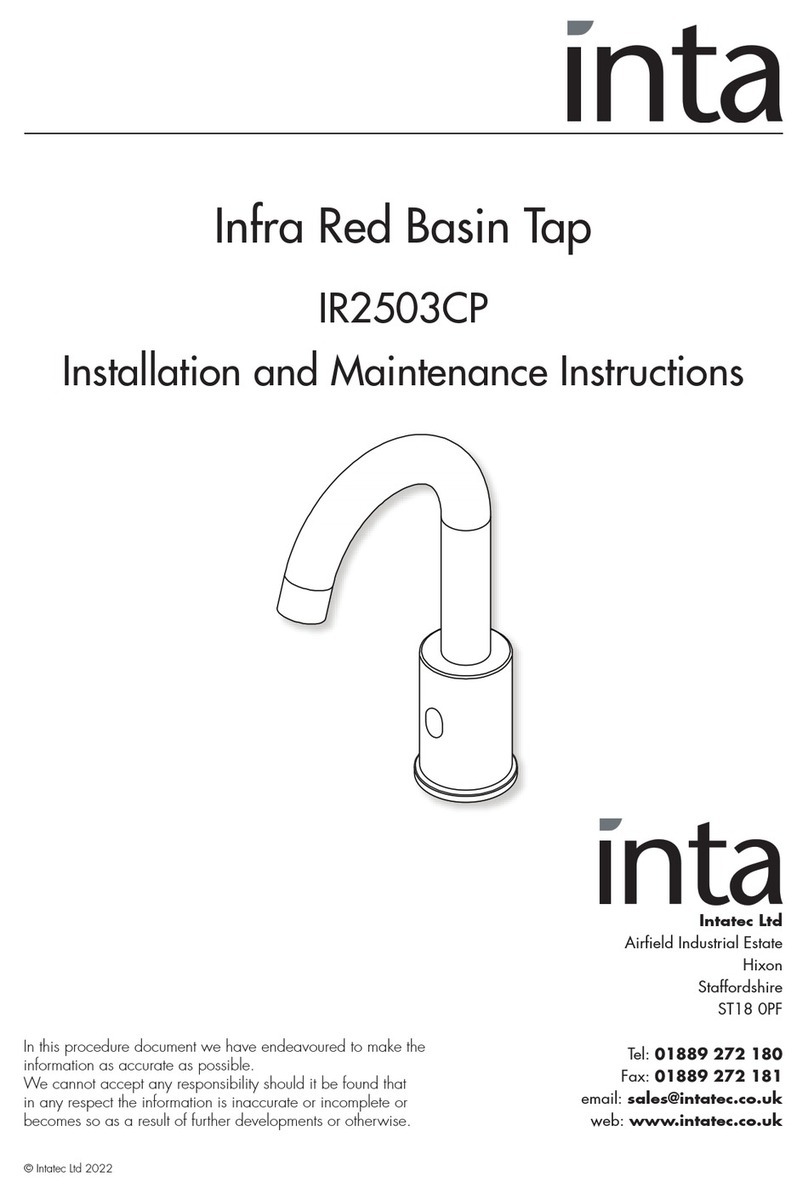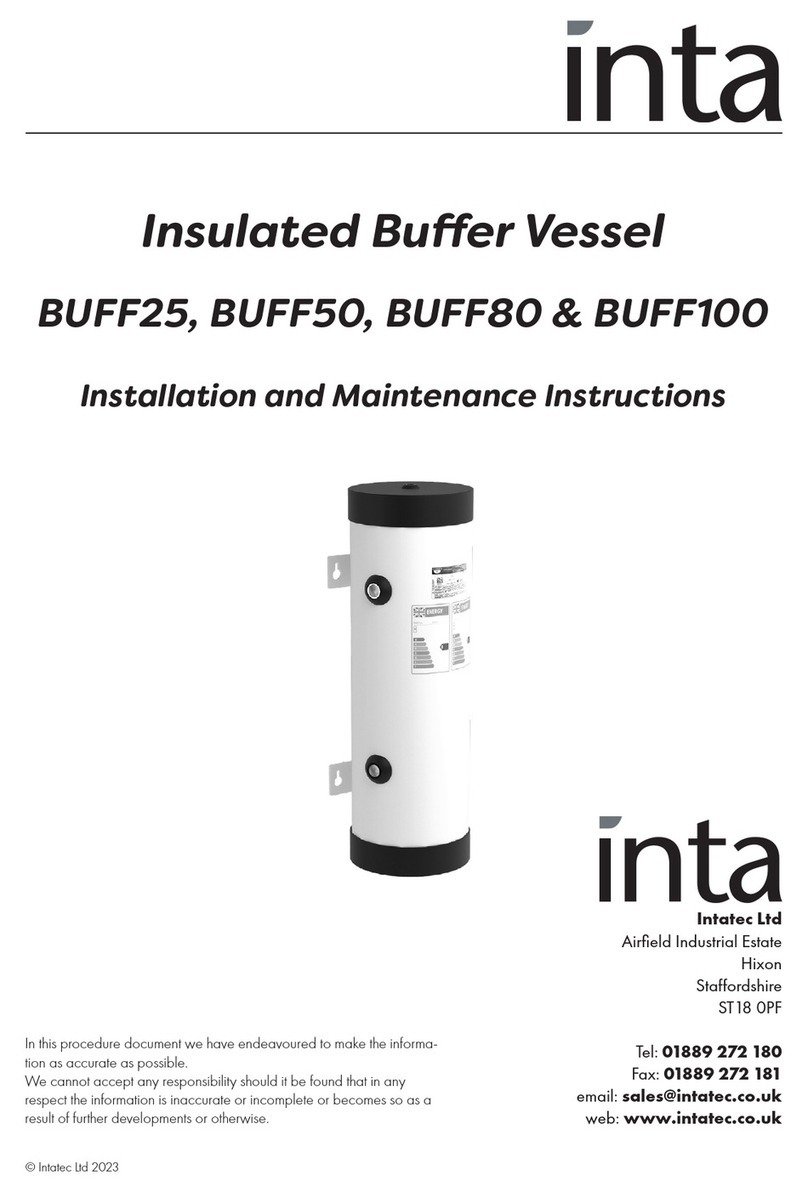
© Intatec Ltd 2017 1
Introduction
This installation guide has been produced for the Nulo shower mixing valve. These instructions
cover the installation, operation and maintenance. Please read the enclosed instructions before
commencing the installation of this product, please note;
We recommend that the installation of any Inta product is carried out
by an approved installer.
The installation must be carried out strictly in accordance with the Water Supply (Water Fitting)
Regulations 1999 and any local authority regulations.
If in doubt we recommend that you contact WRAS - Water Regulations Advisory Scheme on
Tel: 0333 207 9030, your local water authority - details available on the WRAS website or
the Chartered Institute of Plumbing and Heating Engineers on Tel: 01708 472 791.
All products MUST be re-commissioned to suit site conditions to ensure optimum performance
levels of the product are obtained
Safety
This thermostatic shower must be installed and commissioned correctly to ensure that water is
supplied at a safe temperature to suit the users.
The shower is pre-set using ideal conditions to 38°C at the stop with a manual push button
override to 46°C (can be re-set to suit site conditions or user preference – see calibration
page 7).
The maximum mixed temperature takes account of the allowable tolerances inherent in
thermostatic shower mixers and temperature losses.
It is not a safe bathing temperature for adults or children.
The British Burns Association recommends 37 to 37.5˚C as a comfortable bathing
temperature for children. In premises covered by the Care Standard Act 2000, the maximum
mixed water outlet temperature is 43˚C.
Products
Nulo Thermostatic Bar Shower with Telescopic Riser, verhead
Soaker and Handset. CB10032CP
Nulo Deluxe Safe Touch Thermostatic Bar Shower with Riser, Large
Stainless Steel Soaker, Push Button Handset and Smooth Hose CB10036CP
Nulo Thermostatic Bar Shower - valve only ED10046CP
Check Content
Before commencing remove all components from packaging and check each component with
the contents list.
Ensure all parts are present, before discarding any packaging. If any parts are missing, do not
attempt to install your Inta shower valve until the missing parts have been obtained.























